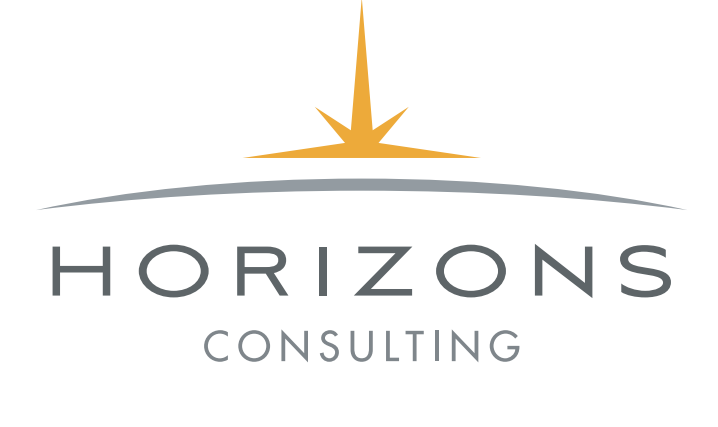Securing Fintech in the Cloud: Best Practices for Protecting Data, Compliance, and Trust
The pace of change in financial services is staggering. Fintech is no longer a disruptor; it’s the new normal. This revolution is powered by the cloud, which provides the agility and scalability needed to meet evolving customer demands and market needs. Cloud solutions for financial services, like the Microsoft Cloud, enable companies to innovate rapidly, modernize core systems, and pass cost savings on to customers.
But this technological shift comes with a critical trade-off. As financial operations migrate to the cloud, they become more susceptible to sophisticated cyberattacks. Old security models that focused on defending a network perimeter are obsolete in a world of distributed components, microservices, and interconnected business partners.
For any fintech company, robust cloud security is not just a technical issue; it’s a critical business concern that directly impacts customer trust, regulatory compliance, and market position. This post will explore the key challenges and best practices for securing fintech operations, with a special focus on leveraging Microsoft cloud security solutions to build a resilient and trusted digital future.
Table of Contents
- Why Cloud Security is Non-Negotiable for Fintech
- Key Challenges in Securing Fintech Cloud Environments
- Conclusion:
- Quick Takeaways
Why is cloud security important? The Non-Negotiable Case for Fintech
The stakes have never been higher. Financial data, including banking credentials, credit card numbers, and personally identifiable information (PII), is one of the most valuable assets traded on dark web marketplaces. When these assets move to the cloud, they become a prime target for attackers. A single security lapse can expose millions of customer records, leading to financial fraud, identity theft, and devastating reputational damage.
Beyond the direct financial impact, fintech companies operate under a microscope of intense regulatory scrutiny. Agencies worldwide enforce strict laws like GDPR, PCI DSS, and the Sarbanes-Oxley Act (SOX), which mandate specific security controls for financial data. Failure to comply with the cloud can result in severe fines, business limitations, and legal consequences. For this reason, cloud for finance services must be built on a foundation of security and compliance, capable of meeting regulations like the Digital Operational Resilience Act (DORA).
Ultimately, organizations that embed security into their cloud strategy build trust with their customers and gain a significant market edge. Weak security, on the other hand, risks regulatory action and the loss of business to more secure competitors.
Key Challenges in Securing Fintech Cloud Environments
Securing fintech in the cloud is a complex task, riddled with unique challenges that demand a modern, proactive approach.
Multi-Cloud and Hybrid Complexity
Many fintechs operate across multiple cloud providers (multicloud) and on-premises systems, creating a complex patchwork of environments. This diversity makes it incredibly difficult to maintain consistent visibility and apply uniform security policies, increasing the risk of protection gaps.
Third-Party and API Risks
Fintech applications rely heavily on APIs to connect with partners and exchange data. While essential for innovation, each API is a potential entry point for attackers. Insecure API implementations can lead to common attacks like parameter tampering and Server-Side Request Forgery (SSRF), which can grant attackers direct access to critical data flows.
Identity and Access Management (IAM)
Managing user permissions across distributed cloud platforms is a huge challenge. Financial systems require strong authentication and fine-grained access controls. A comprehensive solution like Microsoft Entra is designed to verify every identity and secure every access request across all clouds and platforms.
Data Residency and Sovereignty
Financial regulations often dictate where customer data can be physically stored and processed. Cloud services that distribute data across global data centers can inadvertently conflict with these requirements, making careful monitoring essential.
Common Attack Vectors: Misconfigured Cloud Storage
Publicly exposed cloud storage, like Azure Blob storage containers, remains a leading cause of data breaches. These errors often stem from overly permissive defaults or human error.
Container & Orchestration Vulnerabilities
Attackers are increasingly targeting container platforms like Kubernetes, exploiting vulnerabilities to compromise entire clusters of applications and impact multiple financial services at once.
A Blueprint for Fintech Security: Best Practices Powered by Microsoft

To navigate these challenges, fintechs need an integrated, intelligent security strategy. Here’s a blueprint for building one with Microsoft Cloud Security.
Implement a Zero Trust Architecture
The foundational principle of modern security is Zero Trust, which operates on the mantra “never trust, always verify”. This approach eliminates implicit trust and requires strict verification for every access request, regardless of where it originates. Microsoft has built its security strategy around this principle.
- Microsoft Solution: Use Microsoft Entra to enforce strict identity verification, apply least-privilege access, and secure connections between users, apps, and devices.
Adopt a Unified and AI-Powered Security Operations (SecOps) Platform
To combat threats at scale, you need to see them clearly. A unified SecOps platform provides visibility across your entire multicloud and multiplatform environment, enabling you to disrupt attacks before they cause damage.
- Microsoft Solution: Combine Microsoft Sentinel, a cloud-native SIEM, with Microsoft Defender, a leading extended detection and response (XDR) solution. This integration offers unmatched visibility into threats across devices, identities, email, and clouds. To supercharge your team, Microsoft Copilot provides an AI-powered assistant that helps manage threats at the speed of AI, automating high-volume tasks so defenders can focus on what matters most.
Secure the Entire Cloud Estate from Code to Cloud
Modern security must “shift left,” integrating security checks early in the development lifecycle. The most effective way to achieve this is with a Cloud-Native Application Protection Platform (CNAPP), which unifies multiple security capabilities into a single framework.
- Microsoft Solution: Microsoft Defender for Cloud serves as a comprehensive CNAPP. It provides Cloud Security Posture Management (CSPM) to fix misconfigurations, Cloud Workload Protection (CWPP) to secure applications and workloads, and DevOps security to protect the entire software development lifecycle.
Unify Data Security, Governance, and Privacy
Protecting sensitive financial data requires a solution that unifies information protection, governance, and risk management wherever that data lives.
- Microsoft Solution: Leverage Microsoft Purview to discover, classify, and protect sensitive data and manage regulatory compliance. Complement it with Microsoft Priva to proactively mitigate privacy risks and manage subject rights requests, ensuring you respect customer and employee privacy.
Conduct Regular Penetration Testing and Simulations
No matter how robust your defenses are, you must proactively test them. Regularly scheduled penetration testing, vulnerability scanning, and incident response drills are crucial for discovering security gaps before an attacker does.
- Microsoft Solution: While Microsoft provides the secure foundation, fintechs can use tools like Microsoft Defender Vulnerability Management alongside specialized third-party services to conduct deep, manual assessments and simulate real-world attacks. Preparing detailed incident response plans and conducting regular drills is also an essential practice.
Conclusion
In today’s cloud-first fintech world, security cannot be an afterthought; it must be the bedrock of your strategy. Financial data is a top target for cybercriminals, the regulatory landscape is unforgiving, and the threats are constantly evolving.
Choosing the right security partner is key. Microsoft Security offers an end-to-end, AI-powered platform built on Zero Trust principles. It provides fintechs with the integrated cloud solutions for financial services needed to protect data, meet complex compliance requirements, and innovate with confidence. By adopting a protective security strategy, fintech organizations can harness the full power of the cloud while ensuring their most sensitive assets and their customers’ trust remain secure.
Quick Takeaways
- Cloud is Essential for Fintech: Cloud technology fuels fintech innovation but introduces significant security risks that require a modern approach.
- Security is a Business Imperative: Why is cloud security important? A data breach can lead to massive financial loss, regulatory penalties, and a complete erosion of customer trust.
- Adopt a Zero Trust Mindset: The “never trust, always verify” principle is the foundation of modern security. Use solutions like Microsoft Entra to enforce it.
- Unify Your Security Tools: Use an integrated SIEM and XDR platform like Microsoft Sentinel and Microsoft Defender to gain complete visibility and respond to threats across your entire environment.
- Protect from Code to Cloud: Implement a CNAPP strategy with Microsoft Defender for Cloud to secure applications throughout their entire lifecycle.
- Microsoft Offers End-to-End Protection: The Microsoft cloud security portfolio provides a comprehensive, AI-powered platform to help fintechs secure their data, identities, and infrastructure while meeting stringent compliance demands.
